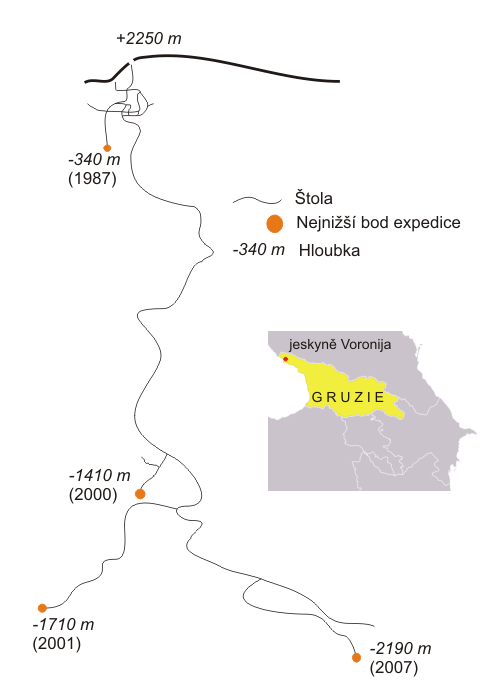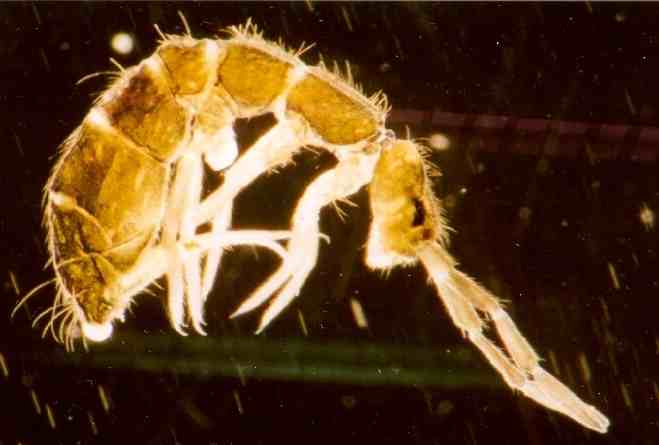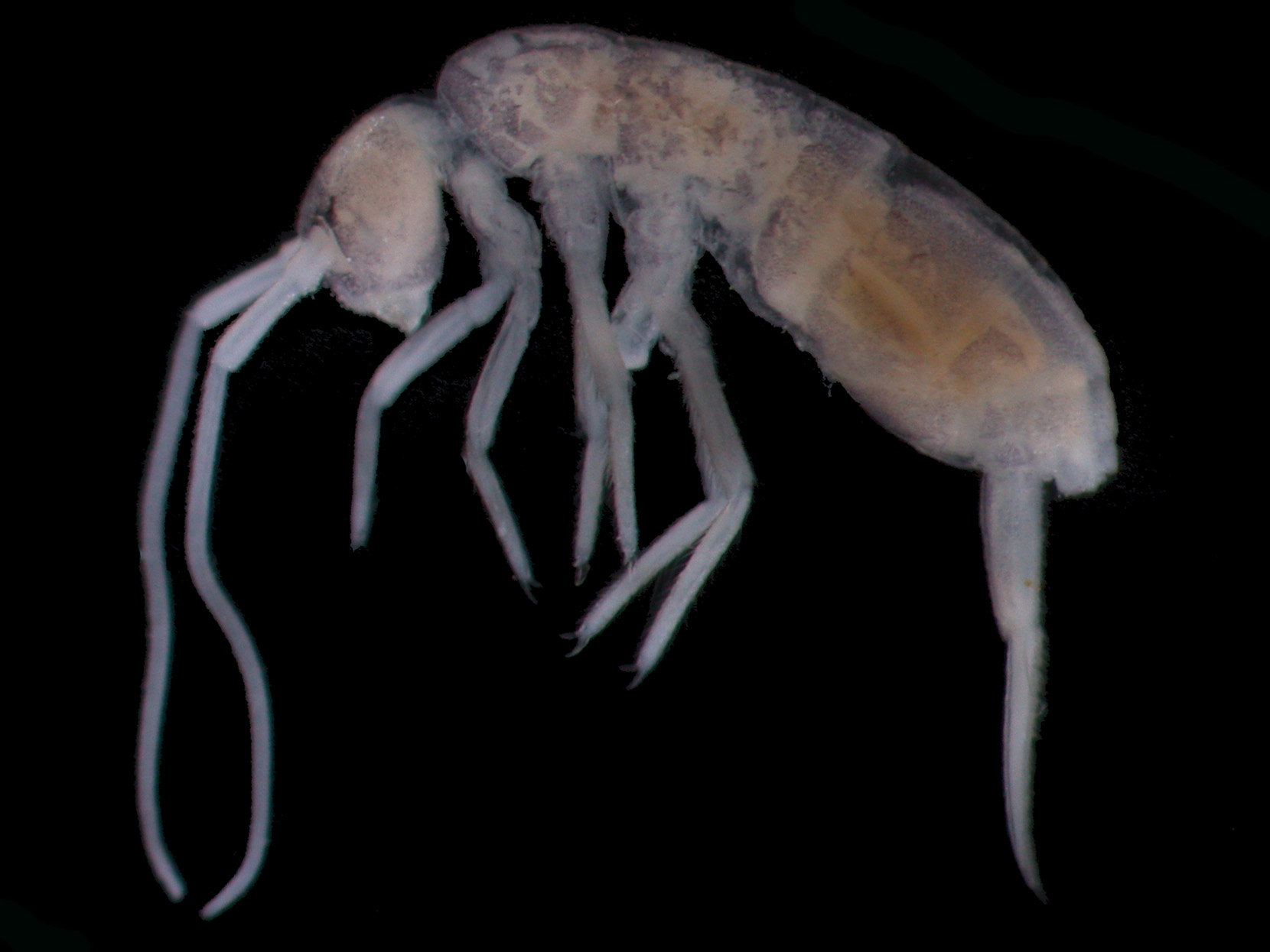|
Anurida Stereoodorata
''Anurida stereoodorata'' is a species of springtails (arthropod) endemic to the Krubera-Voronja cave system in Georgia. It is one of the deepest terrestrial animals ever found on Earth, living at > below the cave A cave or cavern is a natural void in the ground, specifically a space large enough for a human to enter. Caves often form by the weathering of rock and often extend deep underground. The word ''cave'' can refer to smaller openings such as sea ... entrance. It was discovered in the CAVEX Team expedition of 2010. References {{Taxonbar, from=Q25349080 Neanuridae Extant Early Devonian first appearances Fauna of Georgia (country) Cave arthropods ... [...More Info...] [...Related Items...] OR: [Wikipedia] [Google] [Baidu] |
Springtail
Springtails (Collembola) form the largest of the three lineages of modern hexapods that are no longer considered insects (the other two are the Protura and Diplura). Although the three orders are sometimes grouped together in a class called Entognatha because they have internal mouthparts, they do not appear to be any more closely related to one another than they are to all insects, which have external mouthparts. Collembolans are omnivorous, free-living organisms that prefer moist conditions. They do not directly engage in the decomposition of organic matter, but contribute to it indirectly through the fragmentation of organic matter and the control of soil microbial communities. The word ''Collembola'' is from the ancient Greek "glue" and "peg"; this name was given due to the existence of the collophore, which was previously thought to stick to surfaces to stabilize the creature. Some DNA sequence studies suggest that Collembola represent a separate evolutionary line fro ... [...More Info...] [...Related Items...] OR: [Wikipedia] [Google] [Baidu] |
Arthropod
Arthropods (, (gen. ποδός)) are invertebrate animals with an exoskeleton, a Segmentation (biology), segmented body, and paired jointed appendages. Arthropods form the phylum Arthropoda. They are distinguished by their jointed limbs and Arthropod cuticle, cuticle made of chitin, often Mineralization (biology), mineralised with calcium carbonate. The arthropod body plan consists of segments, each with a pair of appendages. Arthropods are bilaterally symmetrical and their body possesses an exoskeleton, external skeleton. In order to keep growing, they must go through stages of moulting, a process by which they shed their exoskeleton to reveal a new one. Some species have wings. They are an extremely diverse group, with up to 10 million species. The haemocoel, an arthropod's internal cavity, through which its haemolymph – analogue of blood – circulates, accommodates its interior Organ (anatomy), organs; it has an open circulatory system. Like their exteriors, the internal or ... [...More Info...] [...Related Items...] OR: [Wikipedia] [Google] [Baidu] |
Endemic
Endemism is the state of a species being found in a single defined geographic location, such as an island, state, nation, country or other defined zone; organisms that are indigenous to a place are not endemic to it if they are also found elsewhere. For example, the Cape sugarbird is found exclusively in southwestern South Africa and is therefore said to be ''endemic'' to that particular part of the world. An endemic species can be also be referred to as an ''endemism'' or in scientific literature as an ''endemite''. For example '' Cytisus aeolicus'' is an endemite of the Italian flora. '' Adzharia renschi'' was once believed to be an endemite of the Caucasus, but it was later discovered to be a non-indigenous species from South America belonging to a different genus. The extreme opposite of an endemic species is one with a cosmopolitan distribution, having a global or widespread range. A rare alternative term for a species that is endemic is "precinctive", which applies to ... [...More Info...] [...Related Items...] OR: [Wikipedia] [Google] [Baidu] |
Krubera Cave
Krubera Cave ( ab, Ӡоу Аҳаҧы, ka, კრუბერის გამოქვაბული or კრუბერის ღრმული, tr; also known as Voronya Cave, sometimes spelled Voronja Cave) is the second-deepest-known cave on Earth, after the Veryovkina Cave. It is located in the Arabika Massif of the Gagra Range of the Western Caucasus, in the Gagra District of Abkhazia, a breakaway region of Georgia. The difference in elevation of the highest cave entrance (Arbaika) and its deepest explored point is . It became the deepest-known cave in the world in 2001 when the expedition of the Ukrainian Speleological Association reached a depth of which exceeded the depth of the previous deepest-known cave, Lamprechtsofen, in the Austrian Alps, by . In 2004, for the first time in the history of speleology, the Ukrainian Speleological Association expedition reached a depth greater than , and explored the cave to . Ukrainian diver Gennadiy Samokhin extended the c ... [...More Info...] [...Related Items...] OR: [Wikipedia] [Google] [Baidu] |
Georgia (country)
Georgia (, ; ) is a transcontinental country at the intersection of Eastern Europe and Western Asia. It is part of the Caucasus region, bounded by the Black Sea to the west, by Russia to the north and northeast, by Turkey to the southwest, by Armenia to the south, and by Azerbaijan to the southeast. The country covers an area of , and has a population of 3.7 million people. Tbilisi is its capital as well as its largest city, home to roughly a third of the Georgian population. During the classical era, several independent kingdoms became established in what is now Georgia, such as Colchis and Iberia. In the early 4th century, ethnic Georgians officially adopted Christianity, which contributed to the spiritual and political unification of the early Georgian states. In the Middle Ages, the unified Kingdom of Georgia emerged and reached its Golden Age during the reign of King David IV and Queen Tamar in the 12th and early 13th centuries. Thereafter, the kingdom decl ... [...More Info...] [...Related Items...] OR: [Wikipedia] [Google] [Baidu] |
Animal
Animals are multicellular, eukaryotic organisms in the Kingdom (biology), biological kingdom Animalia. With few exceptions, animals Heterotroph, consume organic material, Cellular respiration#Aerobic respiration, breathe oxygen, are Motility, able to move, can Sexual reproduction, reproduce sexually, and go through an ontogenetic stage in which their body consists of a hollow sphere of Cell (biology), cells, the blastula, during Embryogenesis, embryonic development. Over 1.5 million Extant taxon, living animal species have been Species description, described—of which around 1 million are Insecta, insects—but it has been estimated there are over 7 million animal species in total. Animals range in length from to . They have Ecology, complex interactions with each other and their environments, forming intricate food webs. The scientific study of animals is known as zoology. Most living animal species are in Bilateria, a clade whose members have a Symmetry in biology#Bilate ... [...More Info...] [...Related Items...] OR: [Wikipedia] [Google] [Baidu] |
Earth
Earth is the third planet from the Sun and the only astronomical object known to harbor life. While large volumes of water can be found throughout the Solar System, only Earth sustains liquid surface water. About 71% of Earth's surface is made up of the ocean, dwarfing Earth's polar ice, lakes, and rivers. The remaining 29% of Earth's surface is land, consisting of continents and islands. Earth's surface layer is formed of several slowly moving tectonic plates, which interact to produce mountain ranges, volcanoes, and earthquakes. Earth's liquid outer core generates the magnetic field that shapes the magnetosphere of the Earth, deflecting destructive solar winds. The atmosphere of the Earth consists mostly of nitrogen and oxygen. Greenhouse gases in the atmosphere like carbon dioxide (CO2) trap a part of the energy from the Sun close to the surface. Water vapor is widely present in the atmosphere and forms clouds that cover most of the planet. More solar e ... [...More Info...] [...Related Items...] OR: [Wikipedia] [Google] [Baidu] |
Cave
A cave or cavern is a natural void in the ground, specifically a space large enough for a human to enter. Caves often form by the weathering of rock and often extend deep underground. The word ''cave'' can refer to smaller openings such as sea caves, rock shelters, and grottos, that extend a relatively short distance into the rock and they are called ''exogene'' caves. Caves which extend further underground than the opening is wide are called ''endogene'' caves. Speleology is the science of exploration and study of all aspects of caves and the cave environment. Visiting or exploring caves for recreation may be called ''caving'', ''potholing'', or ''spelunking''. Formation types The formation and development of caves is known as ''speleogenesis''; it can occur over the course of millions of years. Caves can range widely in size, and are formed by various geological processes. These may involve a combination of chemical processes, erosion by water, tectonic forces, microorgani ... [...More Info...] [...Related Items...] OR: [Wikipedia] [Google] [Baidu] |
International Journal Of Speleology
The ''International Journal of Speleology'' is since 1978 the official peer-reviewed scientific journal of the ''Union Internationale de Spéléologie''. Since 1981 it has been published by the Società Speleologica Italiana. The ''International Journal of Speleology'' is divided into four sections: Botany-Microbiology, Zoology, Geology-Geomorphology, and Abstract-News. The first issue was edited by G. Claus (US), subsequently two other editors were added: R. Husson (France) and G Nicholas (USA). The first two volumes were published by the J. Kramer Verlag (Germany), followed by Swets & Zeitlinger N.V. (The Netherlands). In 1972 R. Husson became editor in chief and nine volumes were issued in the period 1964 to 1977 until the cost of printing requested a radical change. In 1978 the journal became the official journal of the Union Internationale de Spéléologie and it was published in Italy where the cost of printing was lower. In 1981 V. Sbordoni (Italy) became editor in chi ... [...More Info...] [...Related Items...] OR: [Wikipedia] [Google] [Baidu] |
Neanuridae
The family Neanuridae contains pudgy short-legged springtails of the order Poduromorpha. It was established by Carl Börner in 1901. Systematics There are six subfamilies currently recognized: * Caputanurininae * Frieseinae * Morulininae * Neanurinae * Pseudachorutinae * Uchidanurinae The peculiar genus '' Pseudoxenylla'' is of uncertain relationships and hence not assigned to a subfamily yet. Genera These 96 genera belong to the family Neanuridae: * '' Adbiloba'' Stach, 1951 * '' Aethiopella'' Handschin, 1942 * '' Aethiopellina'' Delamare, 1951 * '' Albanura'' Deharveng, 1982 * '' Americanura'' Cassagnau, 1983 * ''Anurida'' Laboulbene, 1865 * '' Anuridella'' Willem, 1906 * '' Arlesia'' Handschin, 1942 * '' Australonura'' * '' Balkanura'' Cassagnau, 1978 * '' Bilobella'' Caroli, 1912 * '' Blasconura'' Cassagnau, 1983 * '' Blasconurella'' * '' Caledonimeria'' Delamare-Deboutteville & Massoud, 1962 * '' Caledonura'' Deharveng, 1988 * '' Cansilianura'' Dallai & Fanciulli, ... [...More Info...] [...Related Items...] OR: [Wikipedia] [Google] [Baidu] |
Extant Early Devonian First Appearances
{{disambig ...
Extant is the opposite of the word extinct. It may refer to: * Extant hereditary titles * Extant literature, surviving literature, such as ''Beowulf'', the oldest extant manuscript written in English * Extant taxon, a taxon which is not extinct, such as an extant species * Extant Theatre Company, a disability arts organisation * ''Extant'' (TV series), an American television series * Hank Hall, also known as Extant, a DC Comics supervillain See also * Extent (other) Extent may refer to: Computing * Extent (file systems), a contiguous region of computer storage medium reserved for a file * Extent File System, a discontinued file system implementation named after the contiguous region * Extent, a chunk of s ... [...More Info...] [...Related Items...] OR: [Wikipedia] [Google] [Baidu] |



.jpg)



